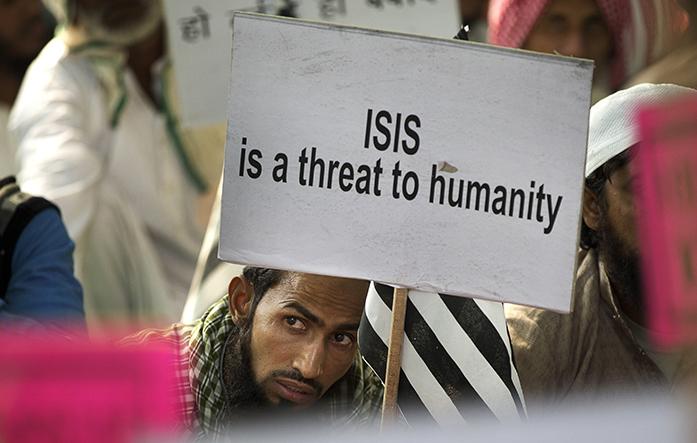“Propaganda is to a democracy what the bludgeon is to a totalitarian state.”
— Noam Chomsky, Media Control: The Spectacular Achievement of Propaganda
Terrorism is a response. By nature, satellite insurgency groups arise out of the subjugation of existing regimes, varying in the methods and success. From nationalist China to the Balkan uprising to quite simply the American Revolution, the politics of rebellion combat and negotiate a power struggle between the establishment and the inflicted.
Whether the Bush administration is at fault for arming these groups or the Obama administration’s power vacuum festered them, Daesh, otherwise known as ISIS, has rapidly proliferated its regime over geopolitical squabbles to craft transnational identity. To use Daesh, the Daily Iowan Editorial Board carefully calculated the chances the barbaric group will cut our tongues, as its members have explicitly claimed to all who use the term — which can be conjugated various ways to mean “trample or crush” or the despised “a group of bigots who impose their will on others.”
However, the group’s popularity (which can be still contested as 30,000 to upwards of 100,000) utilizes a deeply effective propaganda model to draw in recruits. This is most readily apparent by the terminology we attribute the organization in the media: ISIS or ISIL. All recognize the cause as a governing body or state. This elucidates its influence, making the proposed caliphate all the more enticing as a solution to the global crisis.
In the wake of its atrocities, reactionary resistance from governing officials, such as our very own Gov. Terry Branstad, to close doors to refugees highlights shortsighted xenophobia. The Islamophobia creates a vector for ISIS to use in the recruitment process, socioculturally disenfranchising Muslim individuals to the point of strangulation. The group thrives on these knee-jerk political shouting matches.
Furthermore, it hijacks social media and news headlines with bombings, shootings, and torture, highlighted last week from Beirut to Paris (the former’s void in American headlines and live coverage is enough to facilitate discussion of the stateside propaganda model). As a result, the brutish organization’s prowess on the Internet is well-demonstrated.
However, once recruits are initiated, they are locked out of free Internet. Business Insider reported the caliphate’s dominion of its people and their aspects of life in its territory, stretching from Iraq to Syria. The group seized Internet access, monitoring outside information and building an echo chamber of ideology, where even the slightest stray from tenets can result in beheading.
Other extremist organizations use similar tactics, such as Boko Haram — which the Institute for Economics & Peace published as the most dangerous terrorist organization over the past year. The Nigerian group killed 6,644 people in 2014, while ISIS was responsible for 6,073. Born as an opposition to West, Boko Haram relies on a global commodity that’s history traces to Western militarism: the Internet.
After the tragedies of Beirut and Paris, it’s imperative to understand how media, from its purveyors to constituents, mold these heinous acts. More importantly, in the vein of Noam Chomsky’s attributed quote, ISIS straddles both the sides of the analogy, bringing in disheveled youth via propaganda and ruling its victims through bludgeon. Wielding racist rhetoric in the media only fuels its agenda and alleged caliphate.



